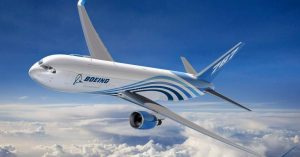WOW Air – The Success Story of the Ultra Low-Cost Airline
Travelling by air is leisure. The comfort it provides is ultimate in nature but this leisure comes at a pocket-emptying cost. Leisure flights’ tickets often come at a quite high-cost, disturbing one’s travel budgets. WOW Air was an Icelandic carrier service and a perfect solution to high-cost flights. It was an ultra-low-cost service that operated services across continents. Sadly, the company ceased its operations on 28th March 2019 due to some operational issues.
WOW Air was founded by Skúli Mogensen, an entrepreneur with an experience of years in the field. Mogensen was born on 18th September 1968 in Iceland and spent most of his childhood in Sweden with his father. He was an exchange student in San Diego in California, then studied philosophy at the University of Iceland. During his college time, he co-founded his first business ‘OZ.com.’ He dropped his college studies as soon as his business flourished.

Mogensen founded OZ.com, a software company which provides consumer mobile messaging solutions, in 1991. The service involves various telecommunication benefits for the consumer, including social networking, e-mail solutions, instant messaging communities. It has strategic partnerships with America Online, Inc., Microsoft, and Yahoo!. The company’s name was later changed to OZ Communications. Mogensen sold the company to Nokia Corp. on November 4, 2008.
Skúli also co-founded ‘Scandif hf’ and ‘Arctic Ventures’. He also led a buyout of MP Bank. After selling OZ Communication, Skúli had thought to retire. A few years into his retirement made him miserable, and he decided to return back to his entrepreneurship days. “I was a failure at retirement. I wanted to use technology and disrupt the market, and the airline industry is a good sector for that,” said Mogensen ensuring his return to the business market.
In 2011, Mogensen founded WOW Air. It had its first inaugural flight on May 31st, 2012 to Paris. The air service was surprisingly very cheap with fares as low as $99 from select US cities to Iceland and Europe. The fair provided the most basic seats and services.
In 2012, Mogensen took over the company as the CEO. In October of the same year, WOW Air acquired Iceland Express’s operations and network. At the end of the year, WOW Air expanded its services to Berlin, Kaunas, Salzburg and Warsaw. Flight frequencies to Gatwick and Copenhagen also saw an increase. A year later, in October 2013, the airline was awarded the Air Operator’s certificate (AOC) by the Icelandic Transport Authority.
The service rapidly became popular in Iceland and all over Europe. In 2013, it carried over 400,000 passengers and was the most punctual airline in Iceland. In December 2014, the company achieved a milestone by reaching its one-millionth passenger. In 2015, WOW Air expanded to North America and Canada the following year. Its annual passenger count increased from 740,000 in 2015 to 1.6 million in 2016. The airline went on to grow its annual passenger number to 3.5 million in 2018.
Mogensen spoke, “I often say it was a moment of insanity. When I started, everyone thought I was completely crazy and wanted to stay far away from me. I chose to go all in on my own,” on the success of the airline service.
In late 2018, Icelandair Group decided that it would acquire the entire share capital of WOW Air with both airlines operating under separate names. However, the conditions of the deal were unlikely to be met and Icelandair abandoned the deal. Indigo Partners, on the same day as the abandoning of the deal with Icelandair Group, reached a preliminary deal to buy WOW Air. The airline cut down its working staff, cancelled flight routes to Delhi, San Francisco, Los Angeles and Vancouver. The deal again was cancelled as Indigo Partners withdrew their offer to buy the company. The airline fell into multiple cancellations, technical failures and more knock-on effects. On 28th March 2019, WOW Air announced that they will be ceasing all the operations. The action left many passengers stranded as they were advised to book flights from other airline services.
Skúli wrote to his employees, expressing his regret for not acting sooner to stabilize the airline’s finances. “I will never be able to forgive myself for not taking action earlier, as it is obvious that WOW was an incredible airline, and we were on the right track to do great things again.”
In an interview with Business Insider, Mogensen said, “One of the mistakes that we made in the last 18 months, was that we were moving away from the low-cost model. Most significantly we made our fleet structure unnecessarily complex with the addition of the wide-body A330 to our fleet.”
However, Skúli is speculated to enter the airline industry soon with another brilliant idea. He was awarded Iceland’s Businessman of the Year in 2011 and 2016. The story of Skúli Mogensen speaks that failures are a part of the journey but can be avoided if suitable action is taken sooner.

Raghav is a student and a content writer. He loves to write about emerging as well as the existing technologies around and about the ones who bring them to you. Music is the other passion that Raghav processes. It is like the fuel to his body. He is also in writing songs and poems. He believes that life is short, so live the best out of what you have got. Raghav considers himself a sci-fi guy, having stories and tech all around in his head, all the time.


